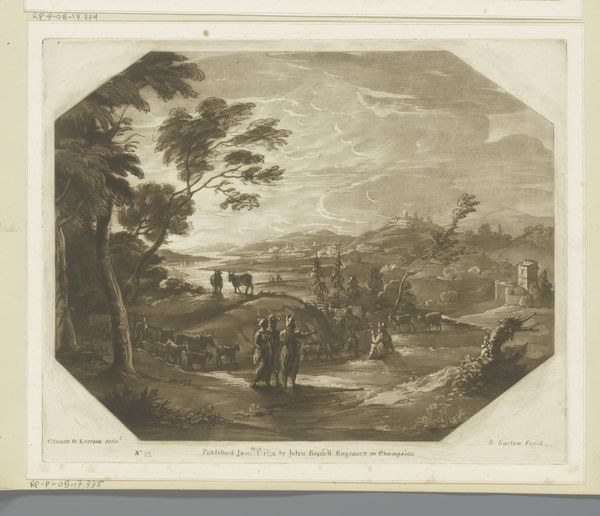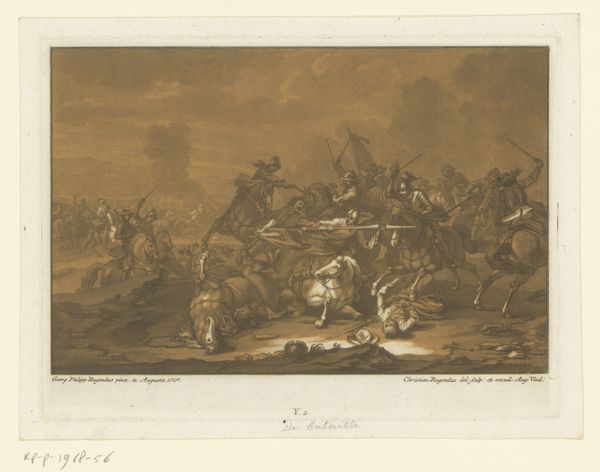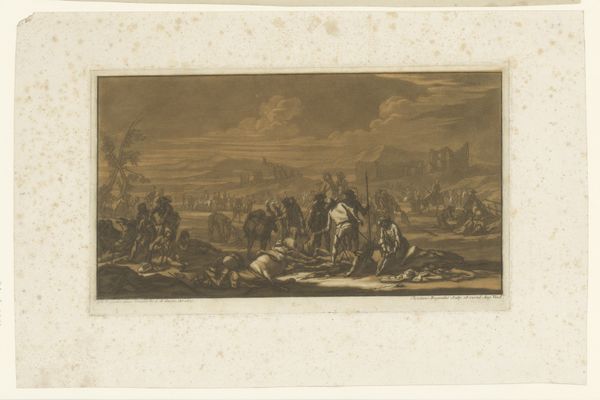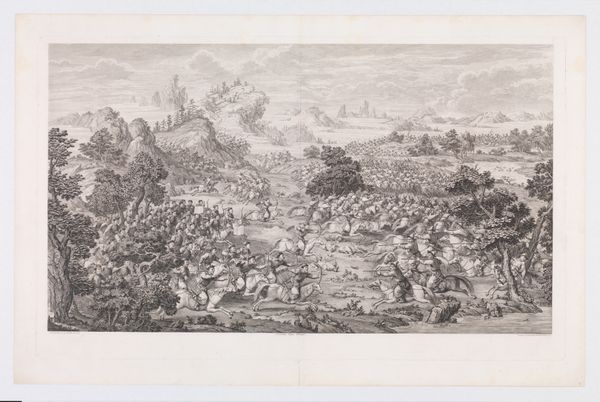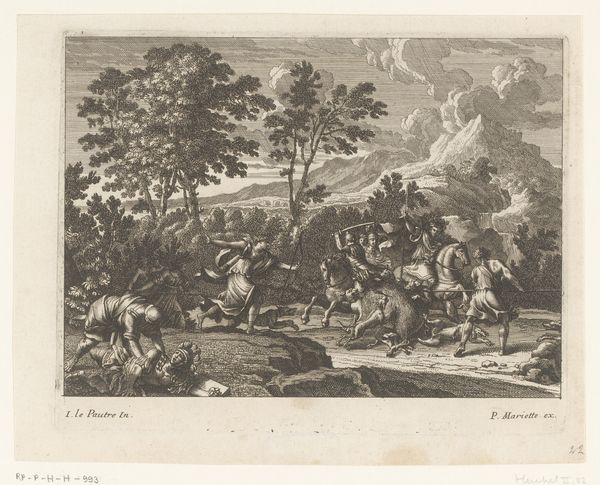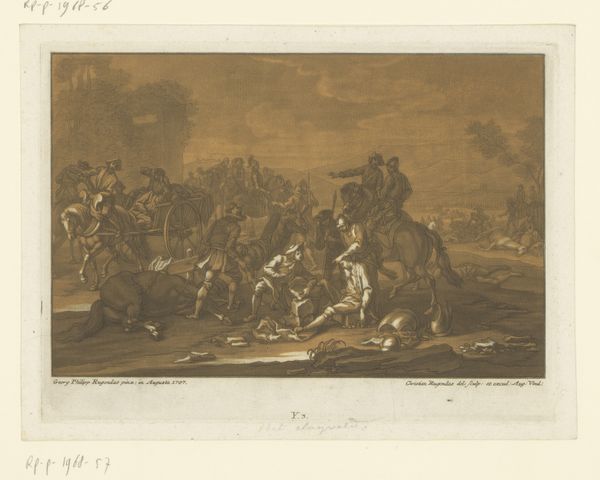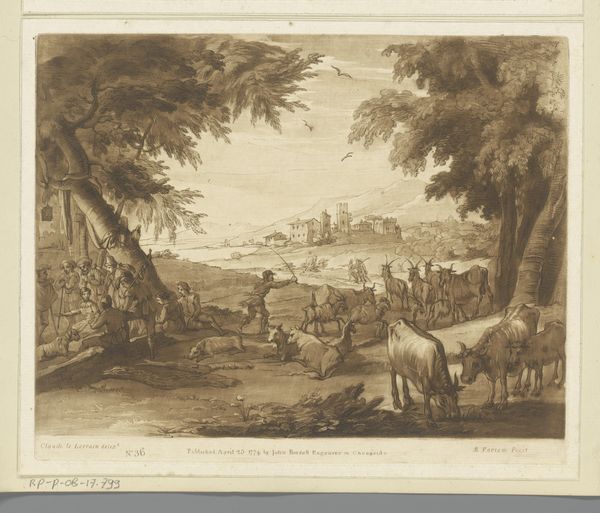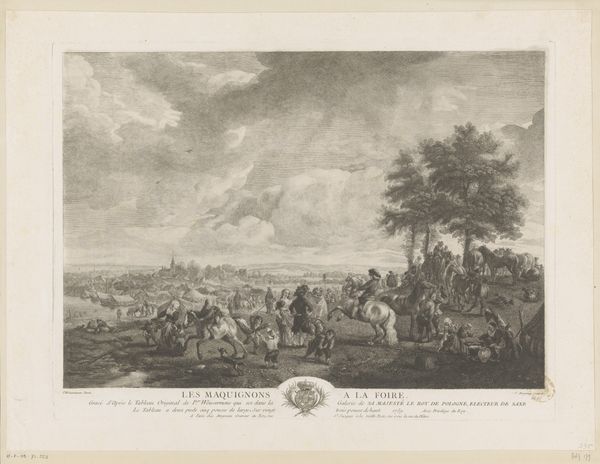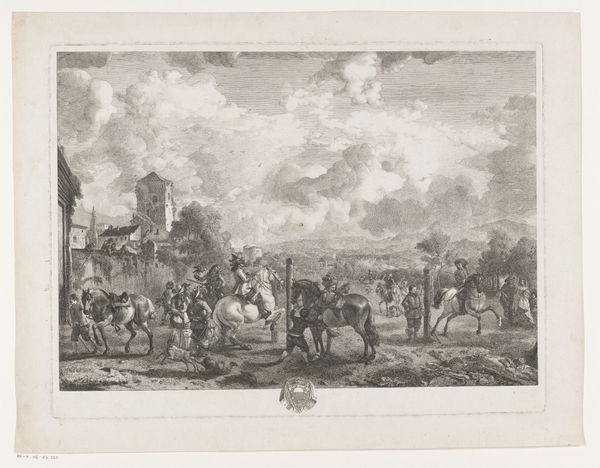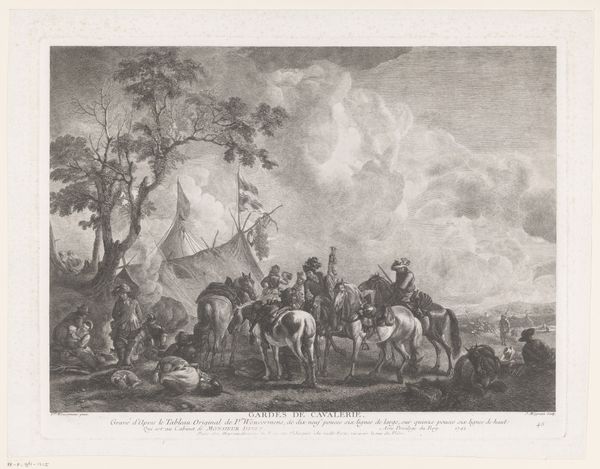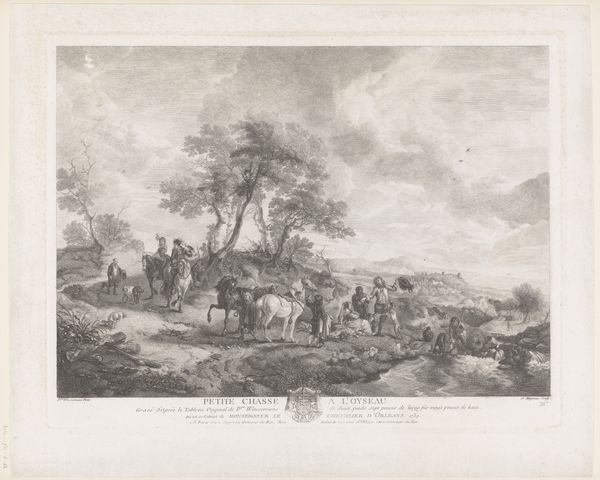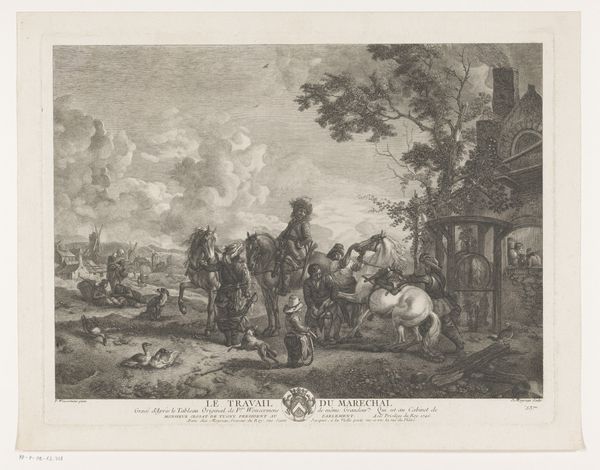
drawing, print, engraving
#
drawing
#
baroque
# print
#
landscape
#
caricature
#
figuration
#
watercolour illustration
#
genre-painting
#
engraving
Dimensions: height 165 mm, width 293 mm
Copyright: Rijks Museum: Open Domain
Curator: Look at this bustling scene! This is "Soldiers in the Camp," a print by Christian Rugendas, created sometime between 1718 and 1781. Editor: What strikes me immediately is the composition. The muted tones and the chaotic scene really convey a sense of unease despite it being a seemingly quotidian setting. Curator: Indeed. Rugendas, belonging to a family of artists specializing in battle scenes, clearly understood how to depict the gritty realities of military life. We can look at the types of tents here: where they're placed in the landscape relative to the soldiers or sources of water, how supplies get used. That will tell us much about the kind of life depicted and what was required for such activity. Editor: Right, I find myself drawn to the individual vignettes. Consider the soldier sprawled on the ground near the tents – is he resting, wounded, or something more grim? What statement is Rugendas making here about the social realities of soldiers in that era? About power or privilege? Or a simple human condition? Curator: The printmaking process itself is crucial. Engraving and watercolor were accessible means of distributing images, particularly of military life. Prints such as these served not only as documentation, but also likely propaganda, influencing public opinion. Think about who was consuming images like this: were they meant to inspire or warn? Editor: Certainly. The landscape too plays a part in all this – in contrast with idealized paintings of warfare. The scraggly tree looming overhead contrasts starkly with the human activity beneath, adding another layer of bleakness, even foreboding. Rugendas does not depict battle victories, but daily survival. Curator: I agree completely. By focusing on this less glamorous side of warfare, Rugendas reveals an aspect of military life frequently overlooked in more heroic portrayals, showing labor but making a virtue out of its reproduction. Editor: It truly gives one pause to consider the narratives we construct around conflict and its toll, not just on the battlefield, but in the quiet moments of existence in its proximity. Curator: Yes, it's a reminder that art, regardless of scale or material, carries with it embedded value from production which carries weight to it over time.
Comments
No comments
Be the first to comment and join the conversation on the ultimate creative platform.

